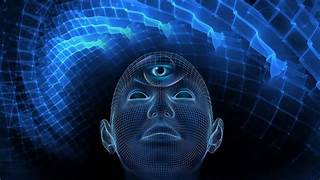MANY PEOPLE ACCEPT AS TRUE, or at least partially true, numerous assertions that seem laughable or absurd to critics. A Harris poll a few years back reported that only 47 percent of adult Americans accepted the reality of evolution: more than half the population still denies the basic lynchpin of scientific biology. Meanwhile, 42 percent accept the reality of ghosts, 29 percent put their faith in astrology, and a quarter of the population think they’ll be reincarnated in another body. Others think they’ll go to heaven or perhaps suffer eternal punishment in hell.
What of the paranormal? Popular acceptance of telepathy (fetching knowledge directly from somebody else’s mind), remote viewing (detecting data from afar), precognition (accurately foretelling the future), and psychokinesis (moving stuff by wishing it) has been clocked at 41 percent and above.
It turns out that paranormal believers are right to accept the reality of at least some anomalous phenomena. This review examines two formidable books presenting evidence and preliminary theory for psi (the catch-all term for such apparent impossibilities). One comes in two hefty volumes, while the other is a monstrous paperback.
The evidence is impressive. I say this with some confidence, even in the face of the claptrap often associated with claims of the paranormal and the dull or cunning shysters who try to sell bogus “psychic readings” or inflated “remote viewing courses.” There’s substantial evidence — both anecdotal and laboratorial — for some paranormal phenomena, but it takes scientific savvy to sort out the trustworthy from the vast piles of dross.
Although the professional organization of academically qualified psi specialists has been an affiliate of the American Association for the Advancement of Science since 1969, its discipline remains the target of shrugs and eye-rolling from most scientists. For example, a cadre of devoted uberskeptics ensures that this attitude of caustic dismissal penetrates Wikipedia, where the first sentence of the entry on psi research begins: “Parapsychology is a pseudoscience.” The two tomes under review, and others recent and forthcoming, might help illuminate the legitimate work being accomplished by various psi investigators.
The vexed history and development of psychical research is revealed in the opening chapters of both books, which address the rise toward the end of the 19th century of spiritualist cults, mediums, ghost-hunters, mind-readers, and levitators of tables and mystics alike. By the 1930s, this magical excitement attracted the interest of some serious scholars, especially those — like the famous Dr. J. B. Rhine at Duke University — who set out to apply the investigative techniques of the new disciplines of psychology and statistics to the study of psychical phenomena.
The new studies therefore came to be termed “parapsychology,” and they adopted techniques more suited to the lab than to the medium’s dimly lit séances. Accounts of spontaneous wonders did not cease, but the emphasis turned to a species of Psych 101 bean counting — the routinized quest for the parameters of what Rhine dubbed “extrasensory perception” and “psychokinesis.” Promising extreme deviations from randomness reported in spontaneous psychic events fairly quickly shrank under this onslaught of dreary card-guessing and the like. Even so, the modest lab stats, with their small shifts from chance, did pile up, indicating the action of some mysterious process unknown even to the then-new physics of relativity and quantum theory.


Leave a Reply